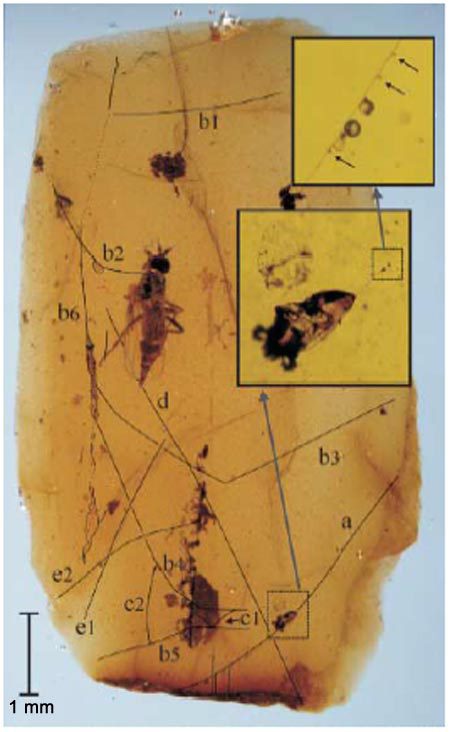A spider web with an insect still trapped in it has been found intact in a piece of amber in Spain. Remarkably, it dates back 110 million years, from the era of the dinosaurs.
This web also preserves the imprint of a fly, a beetle, a mite, and a wasp. It appears to be designed with straight lines cutting through the concentric strands, resembling the structure of modern spider webs.
 |
| The amber clearly shows the spider web with the insects ensnared in it. Photo: LiveScience |
This discovery sheds new light on the early evolutionary period of spiders and the insect species they preyed upon.
The web consists of about 26 silk strands, preserved in a thin layer of amber along with its prey from the arachnid class. Although not fully intact, the remaining parts are sufficient to suggest that it could be a type of orb web.
This may be the oldest spider web ever recorded. Previously, a strand of silk was found preserved in amber, but it was unclear whether it belonged to an actual spider web.
“The advanced structure of the fossilized spider web newly discovered in Spain, along with the type of prey trapped in it, demonstrates that spiders have been catching insects from the air for a very long time,” stated Dr. David Grimaldi from the American Museum of Natural History.
T. An


















































